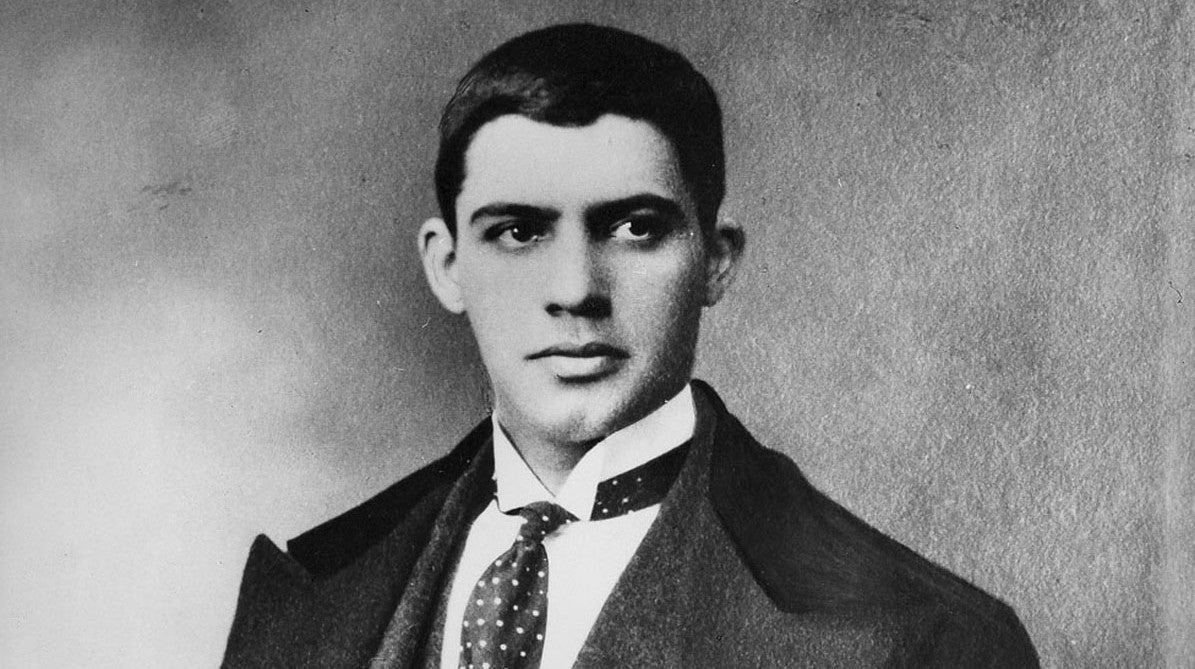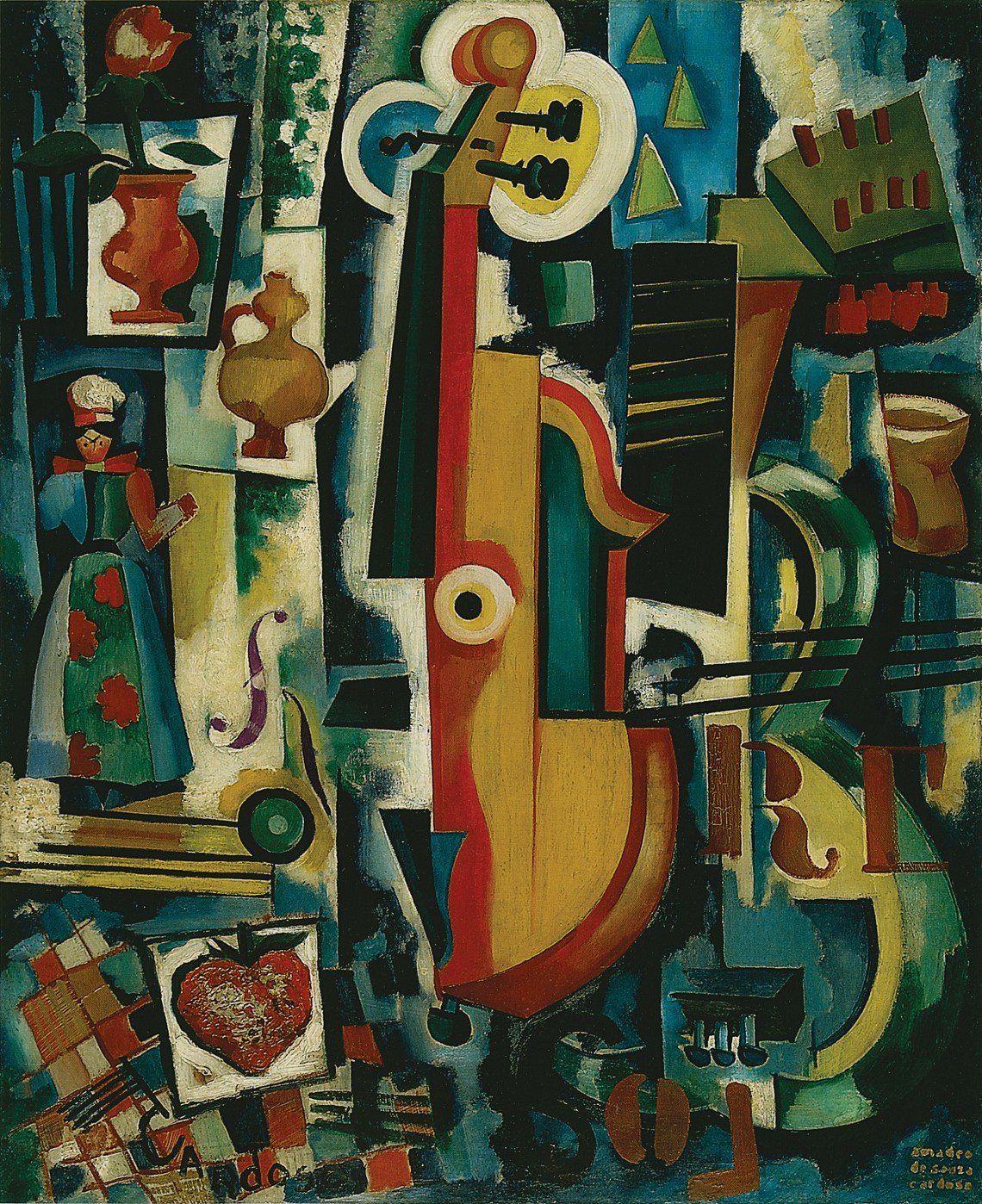
The Modern Artist: Amadeo de Souza Cardoso
Amadeo de Souza-Cardoso He was an artist who created his own pictorial language by refusing labels and constantly seeking change and freedom.
The Portuguese artist was present at the center of modern art and avant-garde ideas, thus having the opportunity for his works to be influenced by all the artistic movements of the 20th century, from impressionism, fauvism, cubism to futurism. His colorful and dynamic works have been exhibited in salons in Paris, Hamburg, Cologne, Berlin, New York, Chicago, London and other cities.
What was Amadeo de Souza Cardoso's artistic career?
Amadeo Ferreira de Souza Cardoso was born on November 14, 1887. He attended preparatory studies in Amarante until 1901 and the following year, he began studies in Coimbra. It was in this city that he met and became friends with Manuel Laranjeira, who introduced him to the small literary and artistic circle with romantic and Portuguese Renaissance lines, which included the presence of Teixeira de Pascoaes, José de Barros, António Carneiro, Ramiro Mourão, Eurico Pousada, Pedro Blanco, Miguel de Unamuno and Augusto Santo. His artistic vocation led him, in 1905, with the intention of becoming an architect, to the Drawing course at the Real Academia de Belas-Artes de Lisboa. However, at the end of the first academic year, he returned to Amarante and never returned to the Portuguese Academy. The very conservative artistic environment in Portugal sparked interest in Paris. In the first decade of the 20th, movements such as cubism and fauvism flourished, which inspired Amadeu Souza-Cardoso to dedicate himself to drawing and painting and ended up abandoning the idea of being an architect. At the end of 1908, he began to publish his caricatural work in Portuguese newspapers such as “O Primeiro de Janeiro”, “Ilustração Popular”, “Ilustração Portugueza”, “Moda Ilustrada” and “Mundo Elegante” and also at this time, in Crèmerie Chaude, met the young Lucie Pecetto, his companion for the rest of his life.
From 1912 onwards, a change was noted in the Portuguese painter's graphics, becoming more bold and iconographic due to the influences of the publication of the Manifesto Futurista, by Filippo Tommaso Marinetti, in the newspaper Le Figaro and the presentation of the Ballets Russes of Sergei Diaghilev, at the Théâtre du Châtelet in 1909.
Between 1911 and 1912, he presented the first works of a new style at the XXVIII Salon des Indépendants, which were entitled “Les poissons d'or”, “La panthère” and “Cavaliers”, and produced a joint exhibition with Modigliani, thus becoming known among the modern Parisian community. The following year, he participated in the 1st October Salon in Berlin and in the Armory Show, in New York, with eight works, an exhibition repeated in Chicago and Boston.
Internationalization, during his lifetime, ended with the London Salon of the Allied Artists' Association in 1914, where he exhibited paintings with a colorful palette like Kandinsky and a figurative style close to Cubism that seduced critics. It is easily identified in his works the strong influences of the different artistic currents in the Parisian context, such as cubism, Orphism, futurism and abstractionism, synthesizing and transforming them into their own distinctive language.
Caught by surprise by the First World War, the painter and his wife returned to Portugal. War times were particularly difficult for the arts, however the artist continued to promote his works and created a new publication. During this period, Amadeo de Souza-Cardoso He was eager to return to Paris, however, at the beginning of 1918, the eczema disease that had affected his face and hands since he was a child returned. This illness prevented him from painting in oils and later, pneumonia, which ended up killing the painter. Despite his few years of life, his artistic production was extensive, and his works are on display in several national and international museums.
What are the characteristics of works by Amadeo de Souza-Cardoso?
Diversity of styles: Amadeo de Souza Cardoso was not limited to a single artistic style. His career spanned various influences and artistic movements, including impressionism, fauvism, cubism, futurism and abstractionism. He synthesized these influences into his own unique pictorial language.
Vibrant colors: His works are often characterized by a vibrant and bold color palette. He used intense colors to create visually impactful and expressive compositions.
Abstraction and geometry: At the height of his career, Amadeo de Souza Cardoso experimented with abstract and geometric elements in his paintings. His work approached cubism and abstractionism, challenging traditional artistic conventions.
Bold iconography: Amadeo de Souza Cardoso explored varied themes, from portraits to landscapes and figurative scenes. He often approached themes in a bold and expressive way, using shapes and colors to convey emotion and energy.
Graphic innovation: Before dedicating himself to painting, Amadeo de Souza-Cardoso He gained recognition as an illustrator and caricaturist. This graphic experience was reflected in his painting style, which often included bold lines and distinctive contours.
Influence of futurism: The contact of Amadeo de Souza-Cardoso with futurism, especially after the Ballets Russes exhibition, it strongly influenced his style, leading to a greater emphasis on dynamics and movement in his works.
Continuous experimentation: Amadeo de Souza-Cardoso He was known for his willingness to experiment and explore new ideas. He was constantly seeking new directions in his art, which led him to evolve and adapt throughout his career.
Internationalization: His exhibition in different places around the world, such as Paris, New York, Berlin and London, contributed to the diversity and richness of influences in his art. Its internationalization also demonstrates the recognition of its artistic talent beyond the borders of Portugal.
What is the influence of Amadeo de Souza-Cardoso in contemporary art?
Diversity and Experimentation: Amadeo de Souza-Cardoso is known for his ability to explore a variety of artistic styles, including cubism, futurism, fauvism and abstraction. His willingness to experiment and his diversity of styles served as an example for contemporary artists who also seek to explore different artistic approaches and techniques.
Fusion of Influences: Amadeo de Souza-Cardoso He incorporated influences from various artistic currents in his work, synthesizing them into a personal style. This resonates with the tendency in contemporary art to bring together diverse cultural and stylistic influences, creating hybridism and new artistic approaches.
Vibrant colors: The vibrant and bold color palette of Amadeo de Souza-Cardoso it also influenced contemporary artists who value chromatic expression in their works. His bold use of color continues to inspire artists to explore new visual possibilities.
Challenge to Conventions: Like this Amadeo de Souza-Cardoso challenged the artistic conventions of his time, contemporary artists often seek to break barriers and question established norms. His bold and innovative approach serves as an example of how art can be used to challenge the status quo.
Graphic Innovation: His experience as an illustrator and caricaturist influenced not only his painting, but also illustration and graphic art in general. Contemporary artists working in different techniques often seek to innovate in the graphic field, in part due to the influence of figures such as Amadeo de Souza-Cardoso.
Valuing Originality: The constant search for Amadeo de Souza-Cardoso The originality and authenticity of his art inspired contemporary artists to value individuality and personal expression in their work, rather than conforming to established formulas or trends.
Although the influence of Amadeo de Souza-Cardoso may not be as widely recognized as that of some of his more famous contemporaries, his legacy as an innovative artist and his ability to transcend geographic and stylistic boundaries continues to resonate in contemporary art, especially among those who value diversity, experimentation and expression. authentic artistic.






